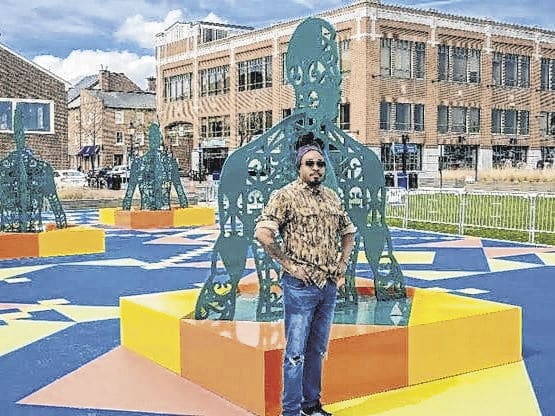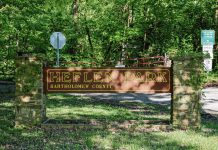
COLUMBUS, Ind. — The designer whose Exhibit Columbus exhibition installation next summer will grace a prime spot at the Bartholomew County Public Library Plaza boasts a background of work reflecting painful American history, passionate and free expression and ethnic triumph.
Those realities surfaced in much of architect Olalekan Jeyifous’ presentation Thursday in the final installment of the virtual Exhibit Columbus symposium “New Middles: From Main Street to Megalopolis — What is the Future of the Middle City.” The presentation from next year’s Miller Prize winner was livestreamed before hundreds of virtual viewers on the organization’s Facebook page and on Zoom.
The taped event will remain online and viewable with all the other symposium presentations since last month at exhibitcolumbus.org for some time.
The Exhibit Columbus program, launched in 2016, is an exploration of architecture, art, design, and community that highlights the city’s Modernist design legacy.
The Nigerian-born Jeyifous joined Whitney Amuchastegui, executive director of Su Casa Columbus and Carolina Castoreno-Santana, executive director of the American Indian Center of Indiana in a discussion that addressed how collaboration, alternative histories and more might play a role in the design of a community’s ethnically-inclusive future.
Jeyifous’ latest installation, installed in early March before the coronavirus shutdown, runs through November in Waterfront Park in the port city of Alexandria, West Virginia — a specific location that the designer discovered was once known for its heavy slave trade and the onetime home of one of the largest slave-trading firms in the nation.
The expansive work is titled “Wrought, Knit, Labors, Legacies.” It focuses on metal slave figures facing the water and its physical foundation also includes a colorful nod to black quilters of yesteryear.
“These characters do not reflect any one person, but more of a broad history,” Jeyifous said.
For more on this story, see Saturday’s Republic.




